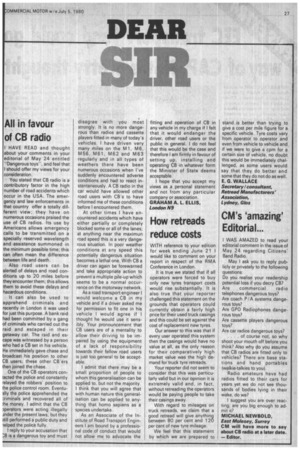How retreads reduce costs
Page 29

If you've noticed an error in this article please click here to report it so we can fix it.
WITH reference to your edition for week ending June 21 I would like to comment on your report in respect of the R M A Conference in London.
It is true we stated that if all operators were forced to buy only new tyres transport costs would rise substantially. It is also true that your reporter challenged this statement on the grounds that operators could currently obtain a fairly high price for their used truck casings and this could be set against the cost of replacement new tyres.
Our answer to this was that if every user operated this system then the casings would have no value at all, as the only reason for their comparatively high market value was the high demand for truck tyre retreads.
Your reporter did not seem to consider that this was particularly valid but in our opinion it is extremely valid and, in fact, without retreading the operators would be paying people to take their casings away.
With regard to mileages on truck retreads, we claim that a good retread will give anything between 80 per cent and 120 per cent of new tyre mileage.
We feel that this statement by which we are prepared to stand is better than trying to give a cost per mile figure for a specific vehicle. Tyre costs vary 'from operator to operator and even from vehicle to vehicle and if we were to give a cpm for a certain size of vehicle, no doubt this would be immediately challenged, as some users would say that they do better and some that they do not do as well. E. G. WALLACE Secretary/ consultant, Retread Manufacturers' Association, Lydney, Glos












































































































































































































